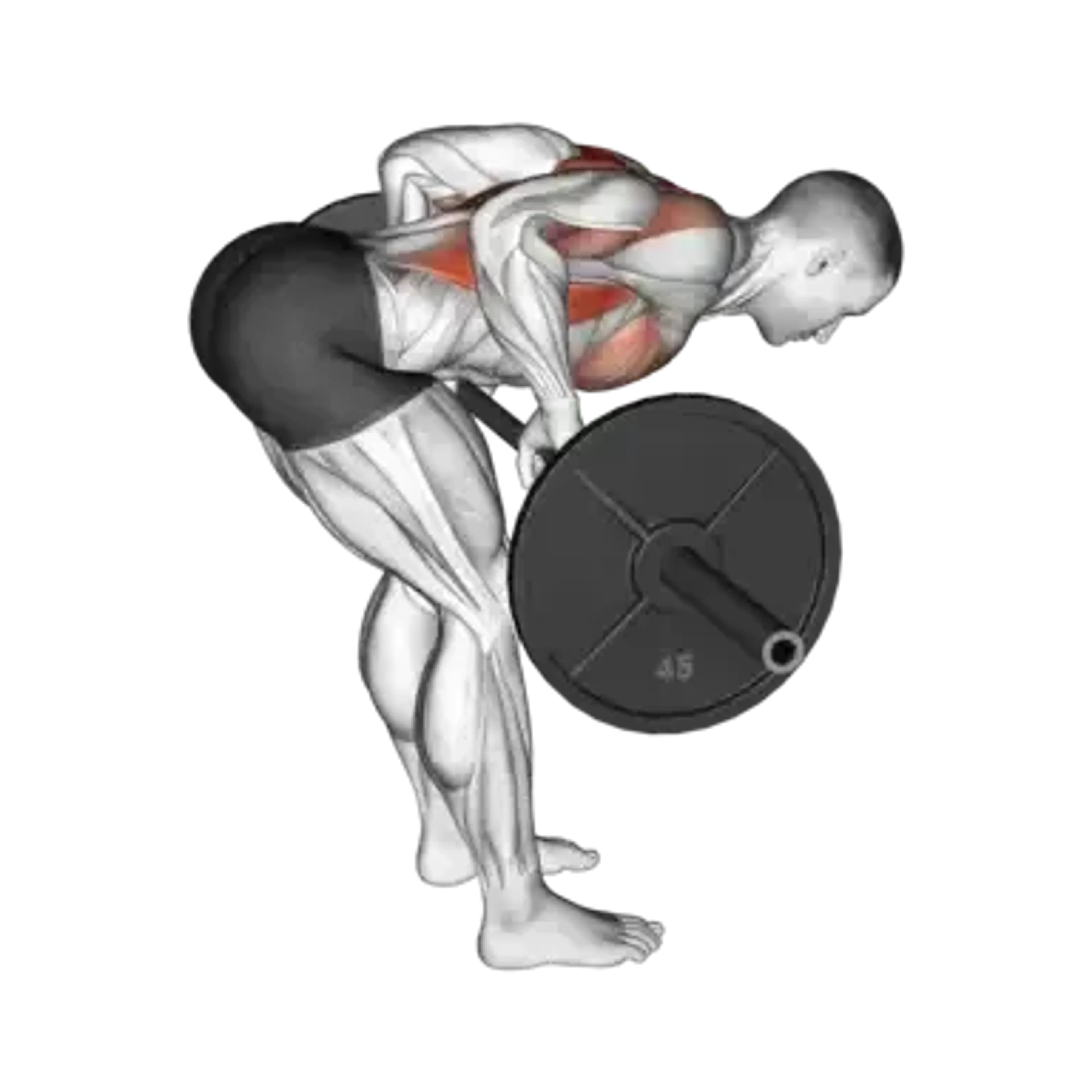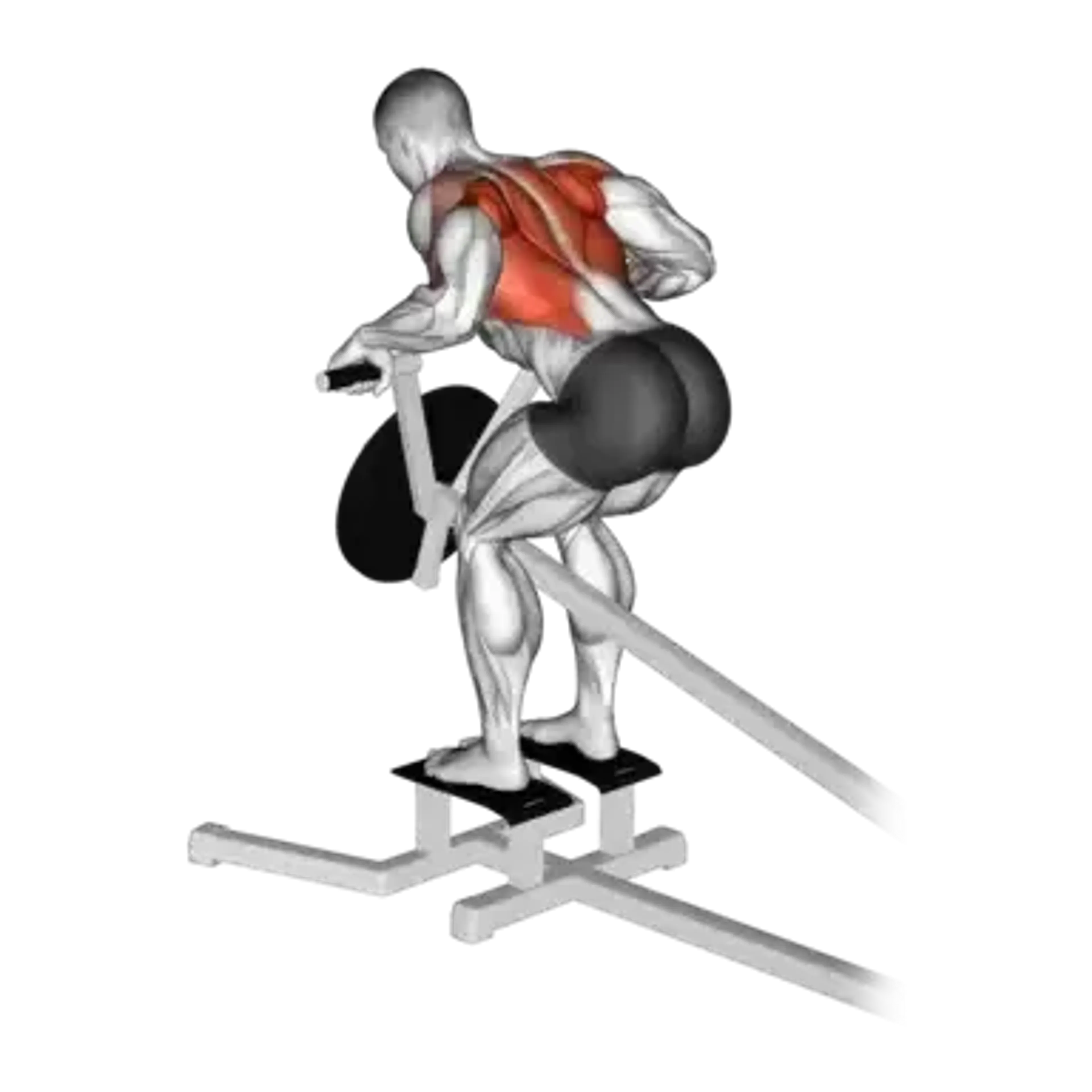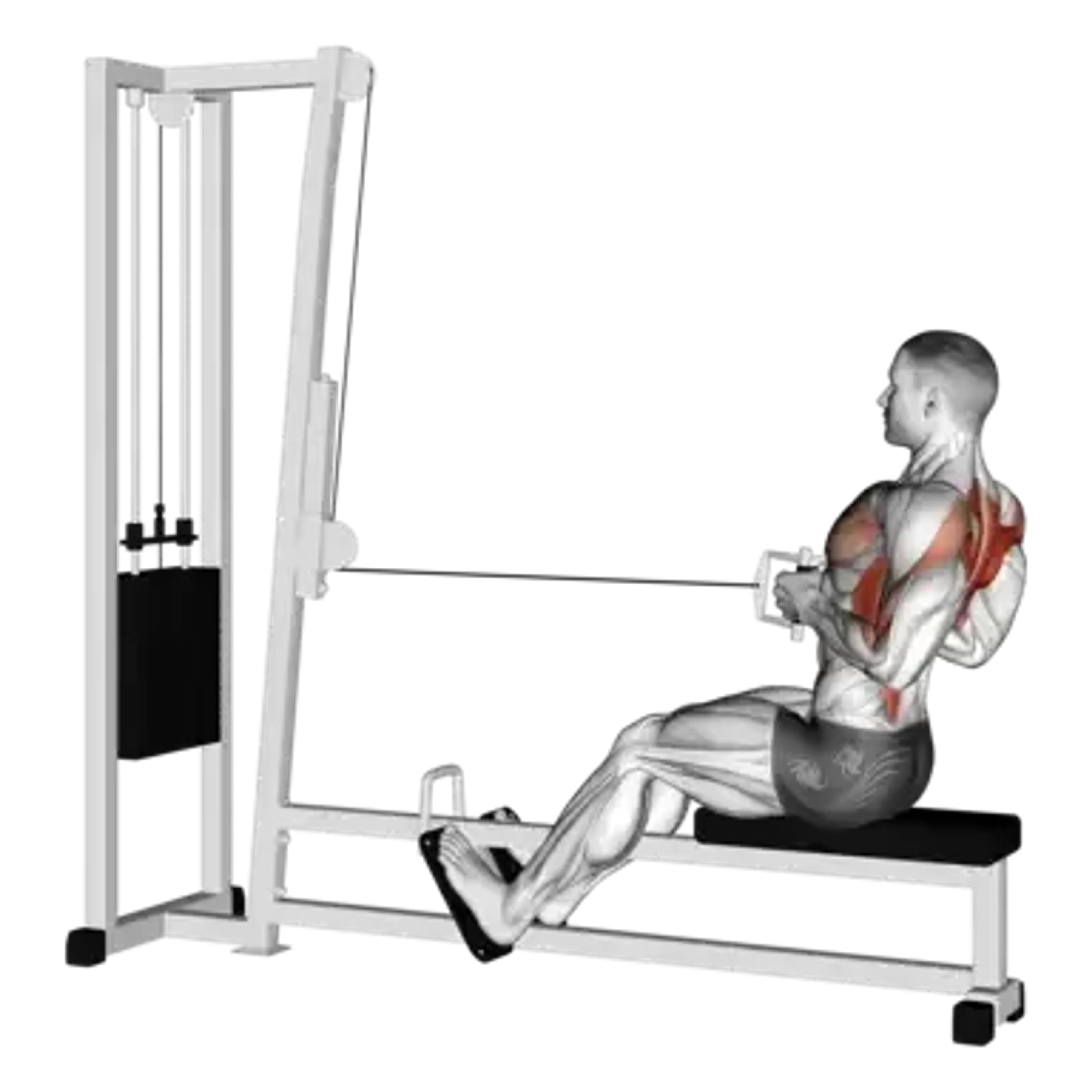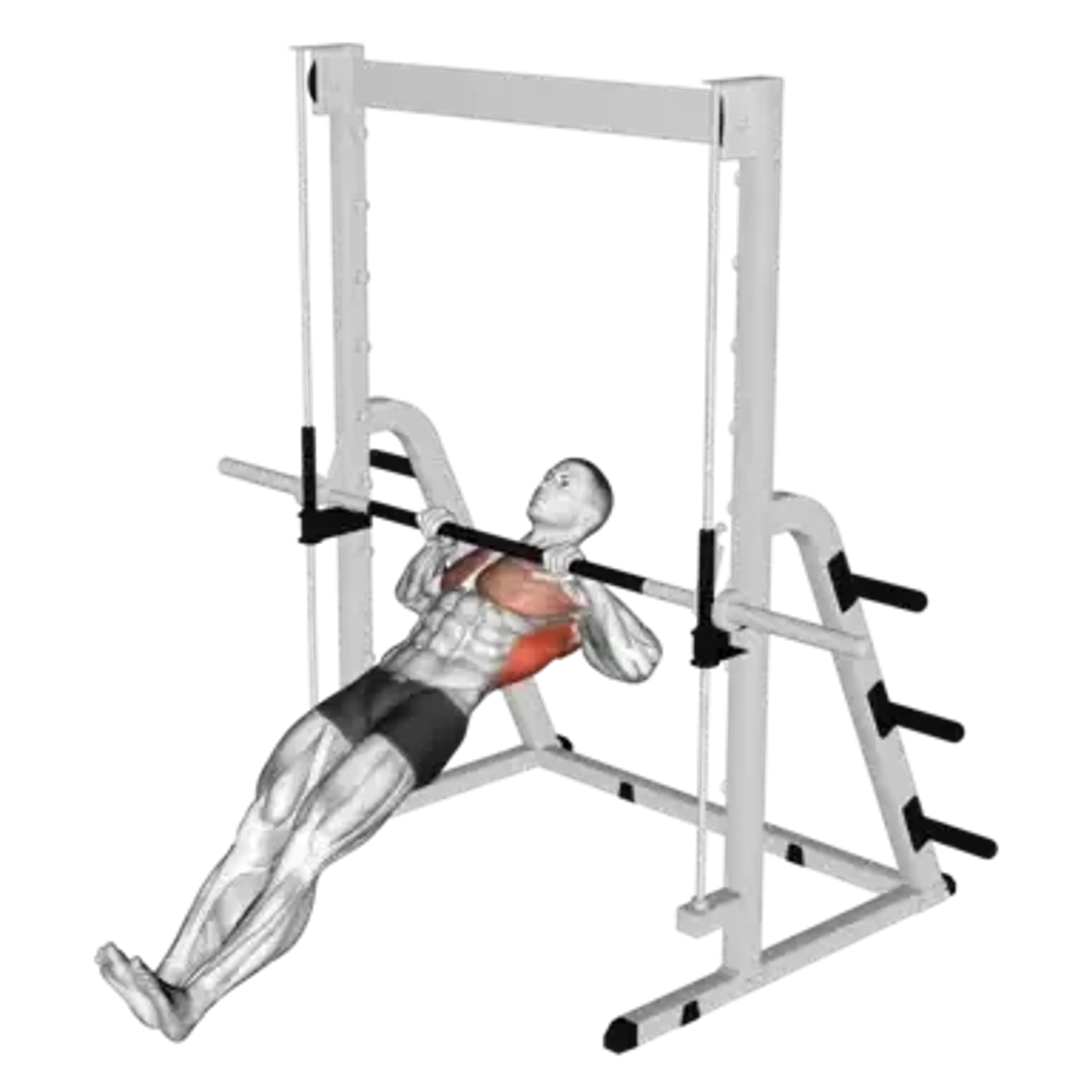Dumbbell Bent-Over Row

Overview
- Primary Focus:
- Back.
- Equipment:
- Dumbbell.
- Difficulty:
- Intermediate.
General Information
Dumbbell Bent-Over Row is a compound exercise that primarily targets the back muscles, specifically the lats, traps, and rhomboids, while secondarily engaging the biceps. It is an intermediate-level exercise that helps build upper body strength and improves posture.
This exercise is beneficial for individuals looking to develop unilateral strength since each arm works independently, reducing muscle imbalances. Additionally, the dumbbell variation allows for a greater range of motion compared to the barbell bent-over row, which can lead to improved muscle activation and flexibility.
A barbell bent-over row is an alternative variation of this exercise, allowing for heavier loads and more overall back engagement. However, the dumbbell version provides more freedom of movement and requires greater stabilization, making it a valuable addition to any strength training program.
Muscles Worked
- Latissimus Dorsi
- Primary
- Lower Trapezius
- High
- Rhomboid Major
- High
- Biceps Brachii
- Medium
- Deltoid
- Medium
- Erector Spinae
- Medium
- Brachialis
- Low
- Teres Major
- Low
Instructions
- Stand with your feet shoulder-width apart while holding a dumbbell in each hand.
- Hinge at your hips and lower your torso until it is almost parallel to the floor, keeping a slight bend in your knees.
- Let the dumbbells hang at arm’s length, palms facing inward.
- Engage your core and pull the dumbbells toward your ribcage by bending your elbows and squeezing your shoulder blades together.
- Pause at the top, then slowly lower the dumbbells back to the starting position in a controlled manner.
- Repeat for the desired number of repetitions while maintaining proper form.
Common Mistakes
Injuries
Dumbbell Bent-Over Row is a medium-risk exercise, primarily due to the strain placed on the lower back and shoulders if performed incorrectly.
One common issue is lower back strain, often caused by rounding the spine or failing to engage the core. To prevent this, maintain a neutral spine and keep your core tight throughout the movement.
Shoulder discomfort can arise if improper form is used, such as shrugging the shoulders or pulling with excessive force. Keeping the movement controlled and focusing on scapular retraction can minimize this risk.
Wrist and elbow strain can also occur if the dumbbells are gripped too tightly or if improper hand positioning is used. Adjusting grip width and ensuring proper wrist alignment will help reduce unnecessary joint stress.
Alternative Exercises
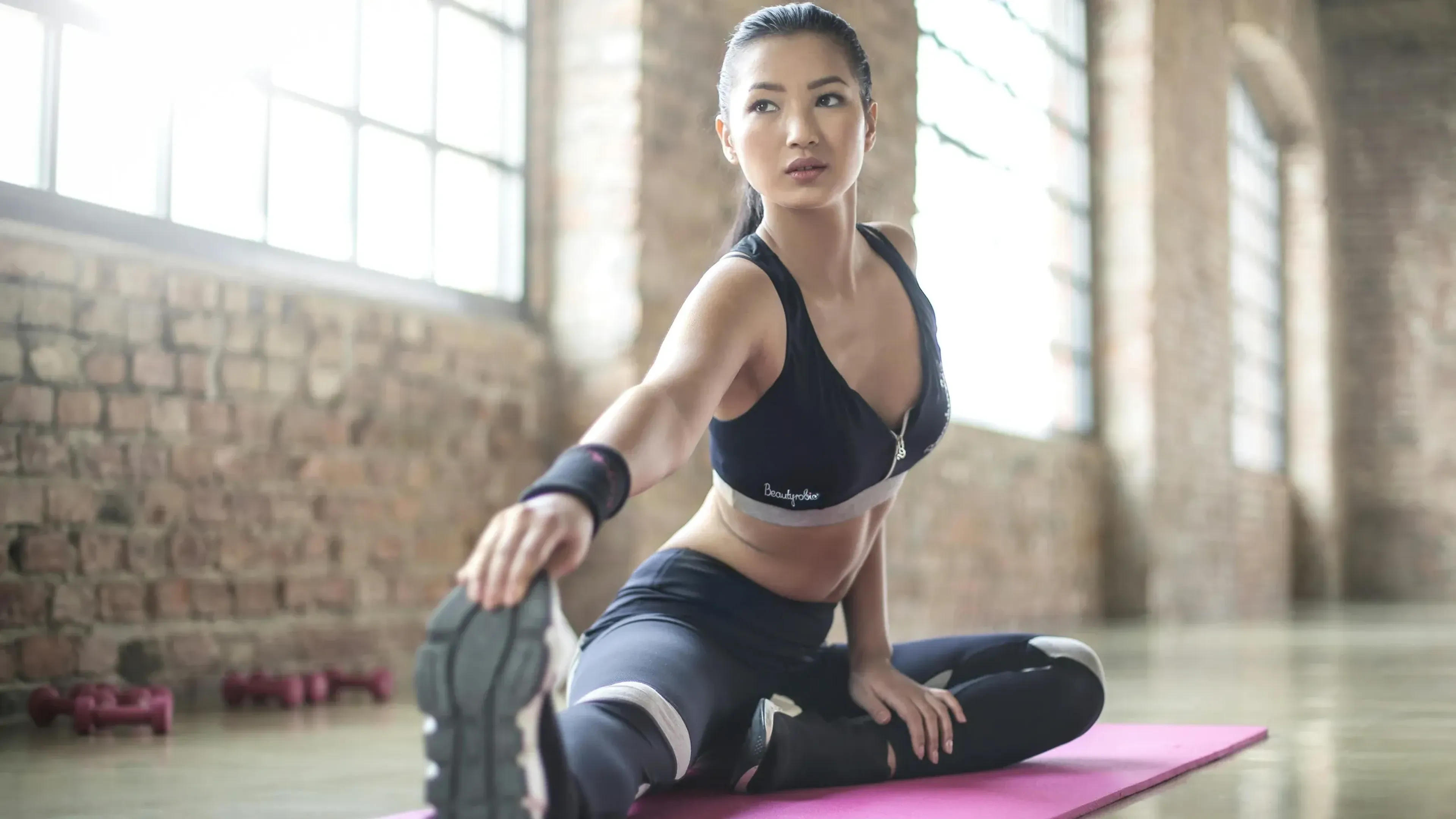
Frequently Asked Questions
- Q: Can beginners perform the Dumbbell Bent-Over Row?
Yes, but they should start with light weights and focus on proper form before progressing to heavier loads.
- Q: How does this compare to a Barbell Bent-Over Row?
The dumbbell variation allows for a greater range of motion and helps correct muscle imbalances, while the barbell version enables heavier lifting and more overall back engagement.
- Q: Should I keep my knees straight during this exercise?
No, keeping a slight bend in your knees helps maintain balance and reduces lower back strain.
Overview
- Primary Focus:
- Back.
- Equipment:
- Dumbbell.
- Difficulty:
- Intermediate.
